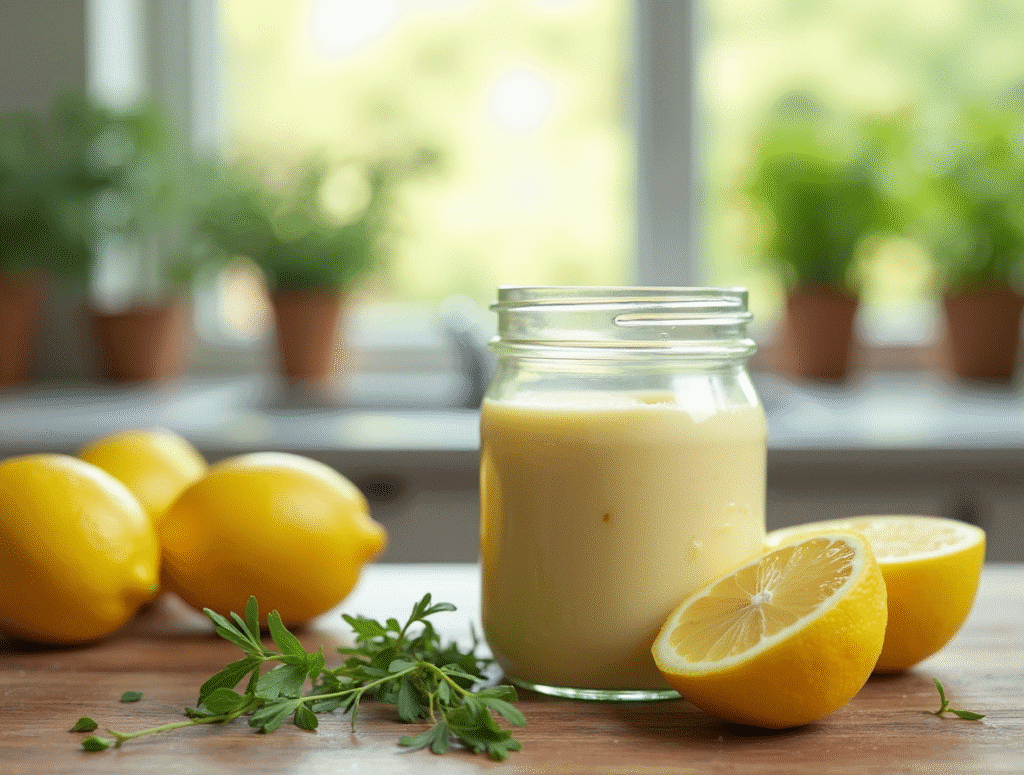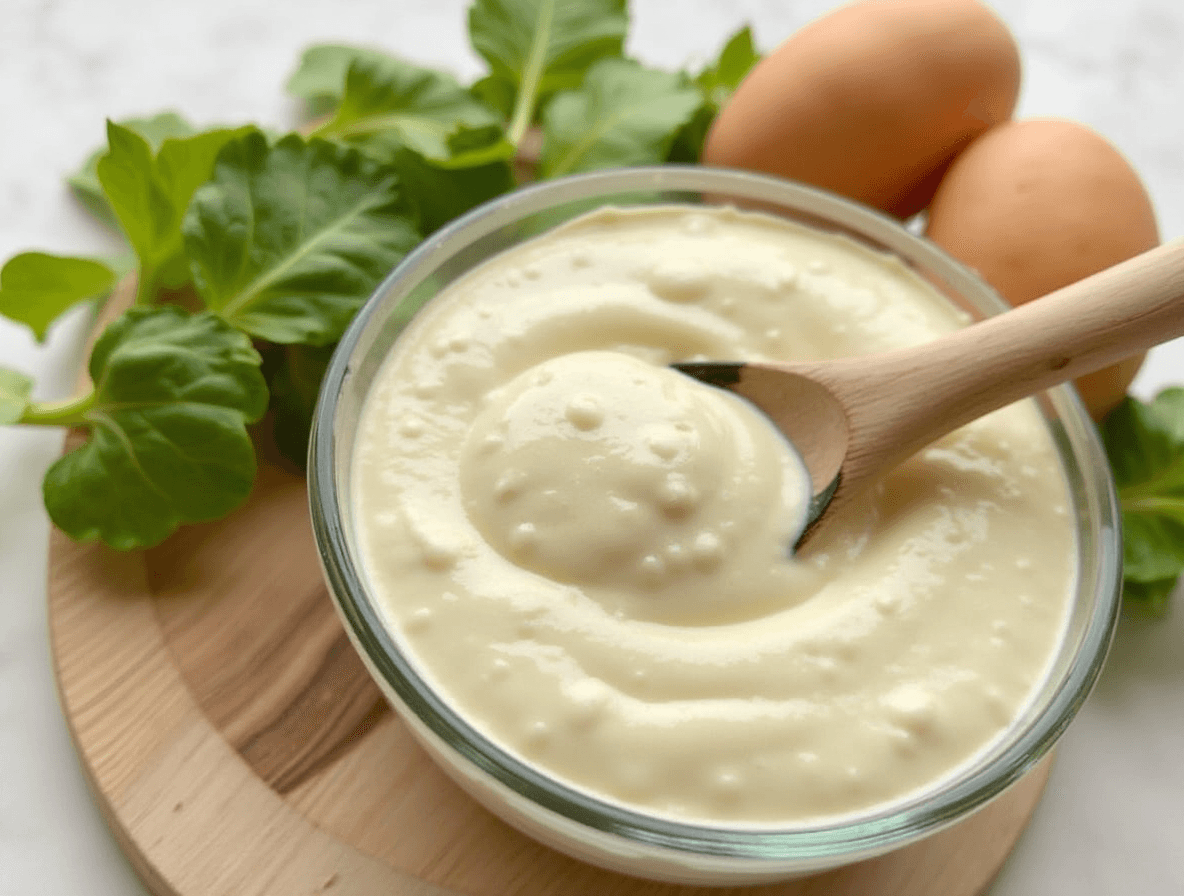Why Healthy Mayo Deserves a Place in Your Kitchen
Let’s be honest—mayo often gets a bad rap. For years, it’s been labeled as the villain of the condiment world. Too fatty. Too caloric. Just… too much. But what if we told you that mayonnaise doesn’t have to be an unhealthy indulgence? What if mayo could actually be part of a healthy recipe lineup?
Table of Contents
Think about it: you’re making a turkey sandwich or a light potato salad. You want that creamy richness without sacrificing your health goals. That’s where healthy mayo comes in. This article will show you how to make your own mayo that’s not only tasty but also packed with wholesome ingredients your body will thank you for.
We’ll explore the benefits of homemade healthy mayo, break down common myths, offer easy DIY recipes, and even discuss how this simple condiment can fit into everything from keto diets to clean eating lifestyles. Ready to dive in? Let’s spread the goodness.
What Makes Mayo “Healthy” Anyway?
It all starts with the ingredients. Traditional store-bought mayo is typically made with refined oils, like soybean or canola, which may be high in omega-6 fats and heavily processed. These kinds of oils can contribute to inflammation when eaten excessively.
In contrast, a healthy mayo recipe uses wholesome fats—think avocado oil, olive oil, or even Greek yogurt—as the base. These healthier fats not only support heart health but also help your body absorb fat-soluble vitamins like A, D, E, and K.
Let’s break it down:
| Ingredient | Traditional Mayo | Healthy Mayo Alternative |
|---|---|---|
| Oil | Soybean/Canola | Avocado, Olive, or Coconut |
| Egg | Conventional | Pasture-Raised or Organic |
| Acid | Distilled Vinegar | Lemon Juice or Apple Cider Vinegar |
| Add-ins | Preservatives | Dijon mustard, garlic, herbs |
Bonus tip: A spoonful of healthy mayo isn’t just tastier—it’s functional. That’s right, it can actually support your digestion (thanks to healthy fats) and give you energy without a blood sugar crash. Think of it as the multitasking superhero of your kitchen.
The Secret Power of Homemade Mayo
Here’s a little food truth no one talks about: Homemade mayo is easier to make than you think. If you’ve got a blender or even a whisk and a little elbow grease, you’re good to go. Best of all, you control everything that goes in.
And when you control the ingredients, you control the health factor.
There’s a certain kitchen magic in watching mayo emulsify. Oil and eggs—two ingredients that normally don’t mix—suddenly become this smooth, luscious sauce. It’s a bit like watching two introverts become best friends at a dinner party. The transformation is both unlikely and beautiful.
Here’s what you need to make a basic healthy mayo:
- 1 large organic egg
- 1 tablespoon Dijon mustard
- 1 tablespoon lemon juice (fresh is best)
- 1 cup avocado oil
- Salt to taste
Just blend everything until it thickens (about 30 seconds), and voilà—you’ve got mayo! Keep it in a sealed jar in the fridge for up to a week.
Tip: If you’re nervous about raw eggs, you can use pasteurized eggs or even try egg-free recipes (we’ll get to that soon!).
Egg-Free or Vegan? No Problem. Mayo Can Still Be on the Menu
If you’re vegan or allergic to eggs, don’t worry—you can still enjoy healthy mayo without compromising your values or your health. In fact, some of the most popular healthy mayo recipes today are entirely egg-free.
Here’s a fantastic vegan mayo recipe that’s plant-powered and flavorful:
- 1/2 cup unsweetened soy milk (or oat milk)
- 1 teaspoon apple cider vinegar
- 1 teaspoon Dijon mustard
- 1/2 teaspoon sea salt
- 1 cup light olive oil
Blend the soy milk, mustard, vinegar, and salt together first, then slowly drizzle in the oil until the texture thickens. That’s your creamy, dairy-free mayo done in under 2 minutes.
Plant-based eaters, rejoice: you can still have your sandwich and slather it, too.
Why Store-Bought Isn’t Always the Villain (But Usually Is)
Let’s be fair—there are some decent healthy mayo brands on shelves now. But navigating them is like searching for a needle in a haystack of buzzwords. “Keto-friendly.” “Paleo-approved.” “Organic.” But what really matters?
Here’s what to look for when scanning the label:
- Oil type: Avoid seed oils. Look for avocado or olive oil.
- Preservatives: Shorter ingredient lists are usually better.
- Sugar: You’d be surprised how many mayos sneak it in.
- Egg source: If it says “cage-free” or “pasture-raised,” that’s a win.
Brands like Primal Kitchen and Chosen Foods often get it right, but making your own is always the gold standard.
Remember: if your mayo can sit on a shelf for a year and not change color or texture, maybe it’s not something you want in your body.
Fun & Flavorful Variations You Can Try at Home
Now that you’ve mastered the base recipe, why stop there? Healthy mayo is a blank canvas for all sorts of flavor upgrades.

Here are a few variations you can whip up in minutes:
- Garlic Mayo (Aioli): Add 1 clove minced garlic and a pinch of black pepper
- Chipotle Mayo: Add 1–2 tsp of adobo sauce from canned chipotle peppers
- Herbed Mayo: Blend in fresh dill, parsley, or basil
- Curry Mayo: Stir in 1 tsp curry powder for a bold kick
These twists don’t just add variety—they give you even more ways to enjoy mayo without the boredom or guilt.
It’s kind of like dressing up your favorite outfit with different accessories. The base is reliable, but the flair keeps things exciting.
How Healthy Mayo Fits into Your Favorite Diet
You might be wondering: “Can healthy mayo fit into my lifestyle?” Whether you’re doing keto, paleo, Whole30, or just trying to eat cleaner, the answer is: absolutely.
Let’s look at a few:
- Keto: High fat, low carb? Mayo was practically made for this.
- Paleo: Use cage-free eggs and clean oils—you’re good to go.
- Whole30: Skip sugar and use mustard and lemon juice as flavor enhancers.
- Mediterranean: Olive oil-based mayo fits like a glove.
Mayo is one of the rare condiments that—when made right—actually supports your dietary goals. It’s a condiment with benefits, not just filler.
Creative Ways to Use Healthy Mayo Every Day
Think mayo is just for sandwiches? Think again. Healthy mayo is surprisingly versatile. You can use it in:
- Salad dressings: Mix with lemon juice and herbs
- Coleslaw: Swap sugar-laden dressing with your own clean version
- Grilled corn: A little healthy mayo, lime juice, and chili powder—heaven!
- Tuna or chicken salad: Ditch the store-bought and add protein with flavor
- Dip base: Stir in Greek yogurt and spices for an amazing veggie dip
It’s the little upgrades that turn your daily meals from meh to mmm.
Conclusion: Healthy Mayo, the Unsung Hero of the Healthy Recipe World
Let’s wrap it up: healthy mayo is no longer something you have to miss out on if you’re eating clean or watching your calories. With simple ingredients, a few minutes of prep, and your own creativity, you can have a creamy, dreamy condiment that’s actually good for you.
Whether you’re spreading it on a wrap, mixing it into a side dish, or dipping your veggies in it, mayo can now earn its place in your clean kitchen.
So, the next time someone says, “Wait, you eat mayo?” you can smile and say, “Yes. And it’s the healthiest thing on my plate.”
FAQs About Healthy Mayo
Is healthy mayo really better for you than regular mayo?
Yes! Healthy mayo typically uses oils like avocado or olive, which are better for heart health and lower in inflammatory fats compared to conventional seed oils.
Can I make healthy mayo without eggs?
Absolutely. Use soy milk or aquafaba (the liquid from canned chickpeas) to make a creamy vegan version.
How long does homemade mayo last?
About 5–7 days in the fridge if stored in an airtight jar. Always do a quick sniff test before using!
Can I use olive oil instead of avocado oil?
Yes, but use light olive oil. Extra virgin has a strong flavor that may overpower the mayo.
Does healthy mayo taste different from regular mayo?
It depends on the oil and ingredients used, but many people actually prefer the lighter, fresher taste of homemade healthy mayo!

